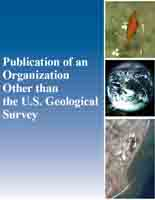Characterizing downstream migration timing of American Eels using commercial catch data in the Penobscot and Delaware rivers
Links
- More information: Publisher Index Page (via DOI)
- Open Access Version: Publisher Index Page
- Download citation as: RIS | Dublin Core
Abstract
Adult “silver-phase” American Eels Anguilla rostrata were a focus of commercial fisheries in the 1970s and 1980s, but stocks have been depleted due to many anthropogenic factors. One significant source of mortality occurs during the downstream migration of eels when passing through turbines at hydroelectric facilities. We sought to construct a model to predict eel migration timing to inform optimization of mitigation actions that might reduce mortality. We utilized commercial catch collected from 16 tributaries in the Penobscot River watershed, Maine (2–10 years), and the Delaware River, New York (31 years). A Bayesian hierarchical approach was used to model the relationship between the timing of silver eel capture and environmental conditions that are known to be related to their movements (i.e., river discharge, water temperature, and lunar cycle). Among river systems, daily catch was associated with higher-than-average flows, temperatures of 7–22°C, and new lunar phase cycles. A cross-validation approach to evaluate the ability of the models to make predictions for new data demonstrated a greater ability (higher R2 values) to predict weekly eel catch (0.01–0.92) compared to daily eel catch (0.00–0.42). In addition, we examined the model’s ability to forecast migration events by applying posterior simulations to make predictions of eel catch by ordinal date. Predicted daily eel catch generally followed the trend of observed daily catch and was stronger for the Delaware River (R2 = 0.67) than for Souadabscook Stream, Maine (R2 = 0.07). Sharp pulses in observed catch were not reflected by the predicted catch. Additionally, variability observed among rivers suggests that site-specific modeling may be advantageous (and necessary) to capture local conditions, thereby improving predictive power. More broadly, our work highlights a novel use of fishery-dependent data in a Bayesian modeling framework to predict intervals of risk for migrating fish.
Study Area
| Publication type | Article |
|---|---|
| Publication Subtype | Journal Article |
| Title | Characterizing downstream migration timing of American Eels using commercial catch data in the Penobscot and Delaware rivers |
| Series title | Marine and Coastal Fisheries: Dynamics, Management, and Ecosystem Science |
| DOI | 10.1002/mcf2.10182 |
| Volume | 13 |
| Issue | 5 |
| Publication Date | October 12, 2021 |
| Year Published | 2021 |
| Language | English |
| Publisher | American Fisheries Society |
| Contributing office(s) | Coop Res Unit Leetown |
| Description | 14 p. |
| First page | 534 |
| Last page | 547 |
| Country | United States |
| State | Maine, New York |
| Other Geospatial | Delaware River, Penobscot River |


